- Home
- Joseph Heller
Catch As Catch Can
Catch As Catch Can Read online
By Joseph Heller
Catch As Catch Can
Portrait of an Artist, as an Old Man
Now and Then: From Coney Island to Here
Closing Time
Picture This
No Laughing Matter
God Knows
Good as Gold
Something Happened
Catch-22
Plays
Catch-22: A Dramatization
We Bombed in New Haven
SIMON & SCHUSTER
Rockefeller Center
1230 Avenue of the Americas
New York, NY 10020
This book is a work of fiction. Names, characters, places, and incidents either are products of the author’s imagination or are used fictitiously. Any resemblance to actual events or locales or persons, living or dead, is entirely coincidental.
Copyright © 2003 by Erica Heller and Theodore M. Heller
All rights reserved, including the right of reproduction in whole or in part in any form.
SIMON& SCHUSTERand colophon are registered trademarks of Simon & Schuster, Inc.
ISBN-10: 0-7432-5838-X
ISBN-13: 978-0-7432-5838-8
Visit us on the World Wide Web:
http://www.SimonSays.com
ACKNOWLEDGMENTS
Susan C. Pyzynski, Librarian of the I.L.S. Development and Special Collections, Brandeis University Library, provided copies of Joseph Heller’s unpublished stories. Shiny Hsu, New York University Archives, patiently sought and located the issue of Apprentice with Heller’s contribution. Patrick Scott, Thomas Cooper Library, allowed us to plunder the University of South Carolina Collection of Joseph Heller. The Interlibrary Loan staff of Thomas Cooper Library supplied necessary photocopies. Charles Adams of Simon & Schuster backed this volume.
CONTENTS
Foreword by Matthew J. Bruccoli and Park Bucker
Previously Published Stories
I Don’t Love You Any More (1945)
Bookies, Beware! (1947)
Lot’s Wife (1948)
Castle of Snow (1948)
Girl from Greenwich (1948)
A Man Named Flute (1948)
Nothing to Be Done (1948)
World Full of Great Cities (1955)
MacAdam’s Log (1959)
Love, Dad (1969)
Yossarian Survives (1987)
Catch-23: Yossarian Lives (1990)
The Day Bush Left (1990)
Previously Unpublished Stories
To Laugh in the Morning
A Day in the Country
From Dawn to Dusk
The Death of the Dying Swan
The Sound of Asthma
Play
Clevinger’s Trial(1973)
Catch-22
Catch-22Revisited (1967)
Joseph Heller Talks About Catch-22 (1972)
Reeling In Catch-22 (1977)
“I Am the Bombardier!” (1995)
Recollection
Coney Island: The Fun Is Over (1962)
FOREWORD
Joseph Heller published thirteen short stories between 1945 and 1990—eight of them before his first novel Catch-22 established him as a major literary figure in 1961. Of the remaining five stories, “World Full of Great Cities” (1955) was written in 1949; two—“Love, Dad” and “Yossarian Survives”—are Catch spinoffs; and two—“Yossarian Lives” and “The Day Bush Left the White House”—are previews of Closing Time. Clevinger’s Trial dramatizes an episode from Catch-22.
There are twenty unpublished short stories in the collection of his manuscripts Heller gave to Brandeis University. Most of them appear to have been written in the forties and fifties while he was a student at the University of Southern California, New York University, and Columbia University, and a composition instructor at Penn State. Five of those buried stories have been rescued here. This volume ends with five nonfiction pieces related to Catch-22.
Joseph Heller forsook the short story form when the success of Catch-22 allowed him to concentrate on novels and plays; but he had worked hard on stories for fifteen years. He started the process in 1945 while in the Air Force awaiting discharge, as he reported in Now and Then (1998):
The subject matter of all the short works with which I was now busying myself and had been busying myself even earlier was not founded on experiences of my own. I hadn’t had any then that seemed worth translating into fiction. I borrowed the action and the settings from the works of other writers, who may—I didn’t consider the possibility then—in turn have been borrowing from the works of still others. These experiences, which I as author dealt with knowledgeably, were vicarious and entirely literary, gleaned from wanderings as a reader, and they ranged from the picturesque whimsies of William Saroyan to the hard-nosed, sexist attitudes, particularly toward women and marriage, of Hemingway and Irwin Shaw, embodying as well implicit assessments of materialism, wealth, Babbittry, and ideals of masculinity and male decency that I ingenuously accepted as irreducibly pure and nullifying all others.
In the immense replacement depot in Constantine, Algeria, where I spent a few weeks with the crewmen with whom I had flown overseas in our small B-25 before being assigned to Corsica, my primary inspiration as a neophyte writer was Saroyan. He appealed to my taste and seemed easy to emulate and well worth copying. (The stories that seemed easiest to emulate and most worth copying were short ones with few descriptive passages written in literary vocabulary and with a large proportion of vernacular dialogue.) In one of his collections was a story titled (I am working here from memory) “Did You Ever Fall in Love with a Midget Weighing Thirty-eight Pounds?”*In one of the stories from my Algerian period (working still from memory) was a young man in New York romantically involved with a girl who walked around on her hands. I have no recollection of my title. (I can imagine now that I imagined then the title “Did You Ever Fall in Love with a Girl Who Walked Around on Her Hands?”) Where she walked on her hands and where the story went I have also mercifully forgotten.
By then I was familiar with most of the work of Hemingway, Irwin Shaw, and Jerome Weidman. Jerome Weidman’s prewar collection of short stories from The New Yorker called The Horse That Could Whistle Dixie was another favorite of mine, as were the two novels of his I’d read…. These were I Can Get It for You Whole sale and its sequel, What’s in It for Me?, and I thought them marvelous, as I did Budd Schulberg’s What Makes Sammy Run? The Studs Lonigan trilogy of James T. Farrell was another sophisticated favorite of mine and everybody else’s, mainly for the realistic action and realistic words. James Joyce’s Ulysses floated briefly into the Coney Island apartment also, no doubt borne there, I recognize now, by the notoriety of the court victory over its banning. Ulysses sailed back to Magrill’s drugstore unread by any of us, although I still can tingle with the frisson of astonishment I enjoyed coming upon two forbidden words in the very early pages, one of which describes the green color of the sea, the other the gray, sunken state of the world. John O’Hara was known to me also.
In one of these [Armed Services Editions], a collection of short stories, I found a work by Stephen Crane, “The Open Boat,” and in this tale of shipwrecked sailors adrift in a lifeboat is a line of dialogue repeated by a man at the oars like a Wagnerian leitmotif (although I did not learn about Wagnerian leitmotifs until later): “Spell me, Billy.”
From this sonorous reiterated chord, which I pondered in my tent, and perhaps from a one-act play of Saroyan’s called Hello, Out There that I might already have read, could have sprung the notion of the short story to be titled “Hello, Genoa, Hello, Genoa,” which would be related entirely in brisk intercom radio dialogue between a bomber pilot, or a few of them, and the control tower at the air base in Corsica. It is (e
ven to this day, I feel) an engaging notion with a beguiling title, and I never tried writing it (or have no recollection that I did).
Instead, I wrote a short story in a day or two that I called “I Don’t Love You Any More.” It is about two thousand words long, and like everything from my Algerian and Corsican periods, it is based on things I knew nothing about except from my sifting around in the works of other writers. Consequently, it reflects the style and point of view of many of the malign and histrionic fictions by American male authors of that time and ours: A married, worldly-wise serviceman, with whom we are intended to sympathize, feels temporarily, upon finding himself back home, and offering no specific complaint, that he no longer wants his marriage and no longer loves his wife. (Whatever that last was meant to mean, I truly had no idea. It was a convention.)
I don’t know how it happened, but after I was back in the states and just out of the service, the story was submitted as an unsolicited manuscript and accepted for publication in Story, a periodical then publishing fiction only and held in very high esteem. By pure luck in timing, the war in Europe being just over, it chanced that the magazine was devoting an entire issue to fiction by men and women from the services.
The stories Joseph Heller wrote and submitted to magazines in 1945–46 while attending the University of Southern California were all rejected until Esquire sent a note of acceptance for “Beating the Bangtails”—retitled “Bookies Beware!”—written as a freshman English theme:
Assigned the subject of describing some kind of method or device, I had invented a series of sure-fire systems, all of them foolish, for always winning money at the racetrack.
And with the note had come a check for $200!
I was now, at twenty-two, a certified young author of fiction and, with Beating the Bangtails, of nonfiction also (an illustrious distinction in 1946, two years before Vidal, Capote, Mailer, and others came rolling onto the national scene and made me feel backward, aged, envious, and derelict).
When Heller transferred to NYU in 1946 he took Maurice Baudin’s fiction-writing course:
Hardly a workday went by that didn’t find the postman delivering to 20 West 76th Street at least a few of my stamped, self-addressed manila envelopes returning manuscripts of mine with rejection slips. The New Yorker then was as admirably efficient in editorial procedure as it was superb in editorial content. I used to joke—and it wasn’t much of an exaggeration—that a story I would mail to The New Yorker in the morning would be back with its concise, slighting rejection slip in the afternoon mail that same day.
Sometime during my second or third semester with Baudin—I took a third semester without credit because I wanted to keep working with him—he chose four short stories of mine and delivered them for consideration to his literary agent. The reader’s report from there said that none in the group was suitable for publication. Of the four, three were subsequently accepted by magazines when submitted by me as unsolicited manuscripts.
A comment I always seemed to get back from Baudin with each short story, regardless of other notes of praise or criticism, was that I was taking too long to begin, dawdling at the opening, as though hesitant to get going and move forward into what I had in mind. It’s a quirk of mine, perhaps a psychological flaw, that has lasted. I have cogitated over it in the closest secrecy, secrecy until now, as a quality that might credibly be described as anal retentive.
In the margin of one story of mine in college, “Castle of Snow,” Baudin asked why I simply didn’t begin at the top of page four and instructed me to start there when I read it aloud to the class. It went well that way, to my grateful astonishment, and I began on my original page four when I typed a clean copy.
Mailed out by me to the “Fiction Editor” of the Atlantic Monthly with that revision, it was rejected, but with a personal letter from a woman there who signed her name and seemed to be implying that with several small alterations it might be accepted if resubmitted. (I wish she had suggested one more, for the choice of Chaucer as the favorite author of an East European immigrant forced to sell his books jars the teeth now with its blatant improbability.) I made the changes, amending what was amiss, providing what was lacking (I welcomed text suggestions then, and I’ve welcomed them since), mailed the revised manuscript directly to her, and the story was accepted for publication as an “Atlantic First.” Coincidentally, in the issue of the magazine in which it finally appeared was a story by the equally young James Jones, also presented as an Atlantic First. (Neither of us was fortunate enough to win the semiannual bonus prize for the best of the Atlantic Firsts in that period.) I was paid $250. With a contact now at the magazine, it was not surprising that sooner or later I would place another work there, and I did. For this second one I received just $200, since it wasn’t as long as the first one (and not as good, or even much good at all).*
Much the same process was simultaneously going on between me and a benevolent editor at Esquire magazine who finally signed his name George Wiswell in elaboration of the initials to the penciled notes of encouragement he had been adding to the formal rejection slips. Eventually he rejected a story regretfully, lamenting some defect in motivation or characterization and virtually pledging that he would recommend it for publication if that fault could be remedied. I made the attempt, the story was accepted, and for this one I received $300.†Sometime later they took another one and paid me less, because the second one was shorter than the first (and not as good, or even much good at all).‡As I advanced in college, I acquired standards and learned to be more critical, and before I finished I also learned that, apart from their being mine, there wasn’t much distinctive about all but two or three of the stories I was writing at this time. I now wanted to be new, in the way that I thought, as I discovered them, Nabokov, Céline, Faulkner, and Waugh were new—not necessarily different, but new. Original.
A flattering consequence of my collegiate fame was that I was prevailed upon against my better judgment to submit a short story to the college literary magazine just getting started, and I did. For those who care, it was called “Lot’s Wife” and was about—oh, never mind that!—the wife was icily indifferent and petty in regard to the victim of an auto accident, the man thoroughly sympathetic but no match for her.
Of more interest is the unflattering aftermath of that charitable gesture, which was a patronizing review of the story in the college newspaper by a fellow student with literary ambitions who condescended to find it pallid, riddled with faults, lacking any compensating merit.
That should have steeled me against unkind critiques in the future, but nothing does.
However, at just about that time I was ecstatic to learn that one of my stories, that same “Castle of Snow,” had been selected for inclusion in the Martha Foley annual anthology of best short stories.
Thatwas ameliorating! There was no doubt I was on my way.
It took longer than he anticipated.
Heller set out to become a professional writer and became a literary genius. He studied in the classroom and at the local newsstand, learning what kind of stories sold to The Atlantic, The New Yorker, and Esquire. His early stories were crafted to fit the requirements of realistic fiction, emulating the style, material, and technique of Shaw, Saroyan, Algren, O’Hara, and Weidman. Heller was an apt student. In stories of bookies, addicts, and failed marriages, he replicated Shaw’s dialogue, Saroyan’s pathos, and Algren’s poolrooms. “Castle of Snow” is an act of homage to Shaw. For a creative-writing assignment to write an O’Haraesque story, Heller could have turned in “Girl from Greenwich” and received an A.
With publications in Esquire and The Atlantic, Heller was a moderately successful “rising young talent” of the late forties. But he never achieved the status of a full-time professional short-story writer. A product of Depression-era Brooklyn, Heller began as a proletarian writer. He wrote stories of urban naturalism without the satire, parody, and surreal humor that identify his novels. His apprentice stories are writte
n in what came to be labeled “New York Style”—a quasi-reportorial vernacular prose. Not until “MacAdam’s Log” ( Gentlemen’s Quarterly, 1959) did Heller break through the conventional magazine formula. Written during the composition of Catch-22 (1961), the story blurs fantasy and reality as “Captain” MacAdam enters a Mittyesque existence, escaping his oppressive family life by means of imaginary transatlantic voyages.
Heller’s early stories don’t break any rules; they don’t experiment with point of view or challenge reader-editor expectations. They’re safe. They lack the sad hilarity and sane lunacy that identify his fulfilled work. His early heroes experience as much despair as any character in Catch-22, without the concomitant hilarity.
This volume is not Joseph Heller’s wastebasket. He worked hard and long on his short stories; the ones that were published appeared in respectable magazines before he became a celebrated novelist. They will instruct and gratify Heller loyalists. Apprentices may take encouragement from observing Joseph Heller’s apprenticeship, during which he learned how to write like Joseph Heller.
The previously unpublished stories are printed here as written by Joseph Heller; the other texts are printed here as they were published. Dead writers cannot approve editorial alterations in their work. No improvements have been made here except for the correction of typographical errors, spelling inconsistencies, and punctuation.

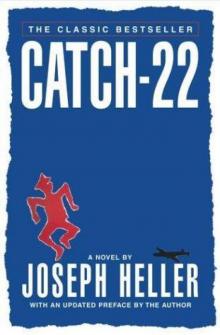 Catch-22
Catch-22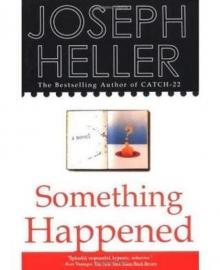 Something Happened
Something Happened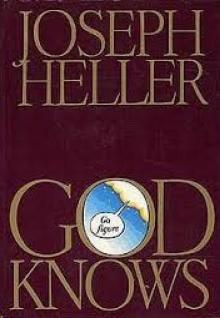 God Knows
God Knows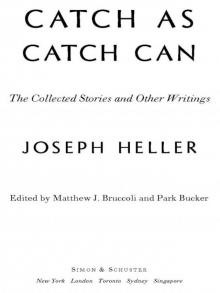 Catch As Catch Can
Catch As Catch Can Closing Time
Closing Time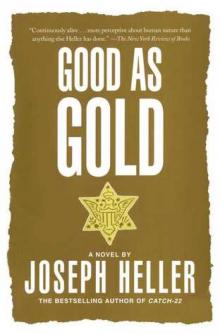 Good as Gold
Good as Gold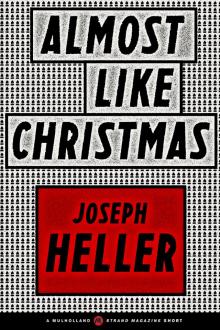 Almost Like Christmas
Almost Like Christmas